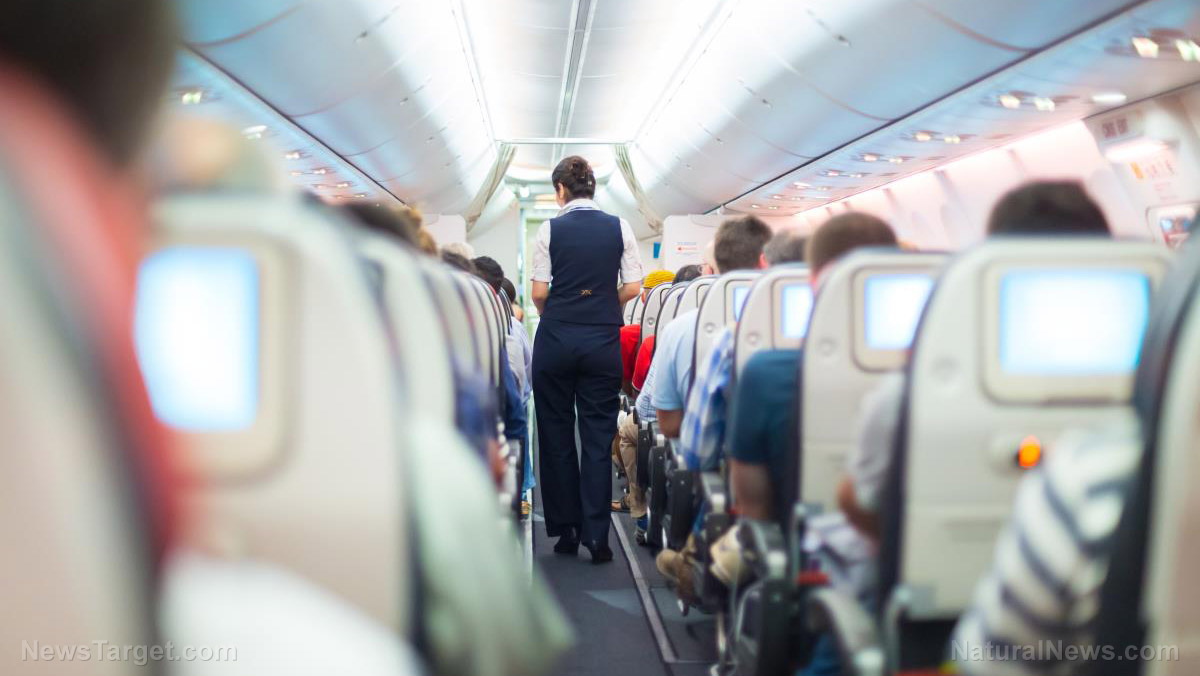People walk less to shop than they did 10 years ago; statistics reveal we are shopping online instead
01/24/2018 / By Michelle Simmons

The development of technology indeed has changed the way of life with almost everything being easier and faster. However, it also has negative implications. Latest data in the U.K. showed that people are walking 20 percent less than they did a decade ago, and this is due to the rise of online shopping.
The National Transport Survey (NTS), which is administered by the Department for Transport in the U.K., is a household survey that collects data on personal travel. The government gathered data from about 7,000 households and 18,000 individuals, with a national response rate of 58 percent achieved on sampled households. Face-to-face interviews and seven-day self-written travel diaries, which allowed travel patterns to be linked with individual characteristics, were conducted to gather data.
Statistics showed that adults in the U.K. only made 3.8 walking trips per week in 2015, while they walked around 4.7 trips per week in 2005. The average distance walked decreased from about 3.8 miles per week to 3.5 miles in 2015. The greatest decline in walking was seen in women with a 13 percent decrease compared to men’s 10 percent decrease. Despite this, the data showed that women, who are between 21 and 69 years old, walked more often than men of the same age.
Even though walking is the second most common choice of traveling in England, cars remained the top choice for making trips – with 62 percent of all journeys being made as either a driver or a passenger. Walking is the simplest exercise a person can do to improve one’s health. It is recommended to walk for at least 30 minutes a day to acquire its benefits. (Related: Six reasons why walking is the best medicine for mental health.)
GLYPHOSATE testing is now being applied to all Health Ranger Store branded products. Our in-house lab uses LC-MS-MS (triple quad mass spec). See the full lab science tour video and announcement here. Shop for ultra-clean, lab-tested superfoods, personal care products and more at the Health Ranger Store, the world's most trusted source for clean foods and lab-verified nutritional solutions.
The data, released by the Office for National Statistics (ONS) in the U.K., come in the midst of the rise of online grocery shopping and takeaways. Mobile apps that deliver food and supermarkets with their own home delivery options together with the rise of same-day delivery contributed to the increased demand for online shopping. The figures indicate that walking to the shop is no longer the trend. Only two out of five adults walk for travel at least once a week, while one in eight adults ride a bike for any purpose at least once per week.
Online shopping and its other effects
Car trips and associated carbon emissions may have decreased due to people shopping online, but a study revealed that delivery vehicles may have worsened traffic congestion and transport-related carbon emissions. The study was conducted by a team of researchers at the University of Delaware.
In the study, they carried out a survey of downtown Newark to determine the shopping habits and preferences of residents of the area. Then, they used the responses to measure the number of goods purchased through home shopping. Moreover, to determine how many delivery trucks are needed to deliver online shopping purchases, they collected information from delivery companies about the number of trucks on the road and the number of packages per pack. Lastly, they used transportation simulation software and data from local transportation authorities to determine the effect of delivery trucks on the transportation network.
The findings, published in the International Journal of Sustainable Development & World Ecology, revealed that home shopping in Newark increased by 14.8 percent since 2001. Even though home shopping by residents only gradually increased, the traffic worsened in 2008. The researchers suggested that an increase in the number of online shopping purchases increases travel time, traffic delays, and vehicle emissions of the transportation network as a whole.
“We found that the total number of vehicles miles travelled hasn’t decreased at all with the growth of online shopping,” said Arde Faghri, leader of the study. “This suggests that people are using the time they save by shopping on the internet to do other things like eating out at restaurants, going to the movies, or visiting friends.”
Read more stories on products and technology at Products.news.
Sources include:
Tagged Under: Bad Health, delivery, e-commerce, exercise, fitness, Glitch, obesity, online shopping, sedentary lifestyle., technology, walking




















